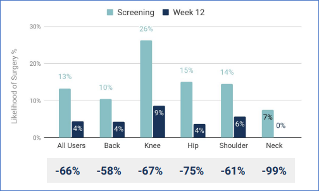Healthcare sustainability initiatives aim to improve quality of care and patient experience, while managing rising healthcare costs. Our approach to lowering the total cost of care includes a full-spectrum approach across network and benefit design, member engagement, clinical programs and cost protection.
Read on to get an update on a few of the programs we’ve implemented locally to drive down the total cost of care.
High Complexity Case Unit (HCCU)
From approximately $15 million in 2016 to $41.3 million in 2021, the savings driven by the High Complexity Case Unit (HCCU) has steadily grown since its inception in 2016.
The HCCU is a cross-functional team of clinicians dedicated to identifying and engaging members who may require more intensive health services.
Care management not only improves short- and long-term outcomes, but it’s the most effective method of driving down the total cost of care. Traditional case management positively impacted an additional 7,328 lives, saving an additional $14.1 million.
Population health enhancements
In 2023, enhanced population health capabilities will launch to build upon identification/stratification capabilities implemented in 2022. These new capabilities will allow us to identify members as candidates for digital outreach. For instance:
- Members with chronic conditions and a digital solution as part of their benefit package will be steered toward a benefited digital solution designed to improve their health outcomes and lower the cost of care
- Members who have not engaged in case management or a carve-out program in the past 12 months and have future costs associated with an unattributed healthcare system will be steered toward an attributed system to contain their medical spend
- Members with chronic medical conditions and at least three associated gaps in care will be prompted to seek care to close those gaps
This enhancement promises significant savings with projections of at least $900,000 in value in 2023 and nearly $2 million in 2024 for fully insured and government lines of business. More analysis is required for self-insured groups.
Digital musculoskeletal program update
In 2022, we introduced an end-to-end, digital musculoskeletal program for our self-insured clients for the 2022 plan year and early results are impressive.
Hinge Health utilizes wearable sensor-based technology to provide one-on-one digital physical therapy from home. This best-in-class program provides a less costly and more accessible alternative to in-person therapy. In addition, the program offers health coaching and expert medical opinion resources for comprehensive support.
459 members actively engaged in the program in 2022. Of those, 305 completed at least 12 weeks of services and self-report a 52 percent reduction in pain. In addition, members indicate a significant decrease in their likelihood to pursue surgical intervention. This translates into $1,120,983 in savings compared to $303,475 in program costs resulting in a return on investment of 3.7 times*.

Members further indicated decreased anxiety and depression symptoms – with 73 percent experiencing a reduction in anxiety and 59 percent fewer experiencing depression since the start of their treatment.
MSK conditions are among the top three cost drivers for employer-sponsored health plans, so demand is high. The new plan year shows another 25 groups with 160,000 members joining the program. If you’re interested in learning more about Hinge Health, contact your account representative.
Value-based agreements
Since 2011, Blue Cross has been working to uncouple provider payments from claims to significantly increase the proportion of healthcare dollars that reward the value of care rather than the volume. Tying payments to quality measures puts meaningful dollars at risk for providers as an incentive to meet those benchmarks.
Over the last several years, the percentage of claims with meaningful dollars at risk have increased significantly. In 2022, 38 percent were tied to meaningful risk, up from three percent in 2019. In that time, we’ve contracted with specialists in the high-spend areas of orthopedics, gastroenterology, nephrology, and oncology. Early results of the contract with Minnesota Oncology trended more than 10 percent below the Twin Cities oncology market for employer groups. You can get more details on this agreement in the press release.
Our goal is to have 50 percent of claims attached to meaningful risk within five years.
To learn more about other healthcare sustainability initiatives, contact your Blue Cross and Blue Shield of Minnesota representative.
Insights and updates
Get the latest information to help you run your business
